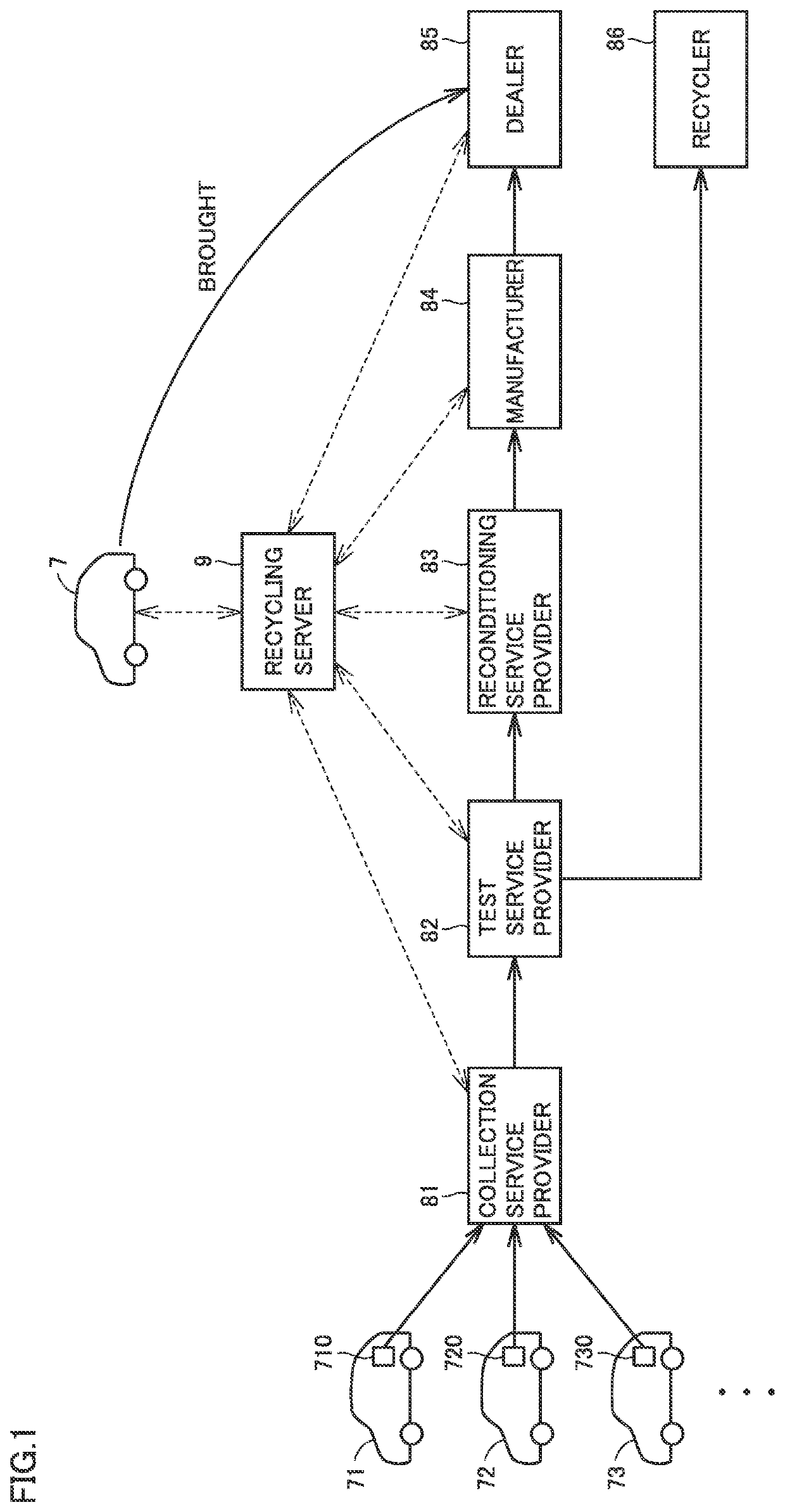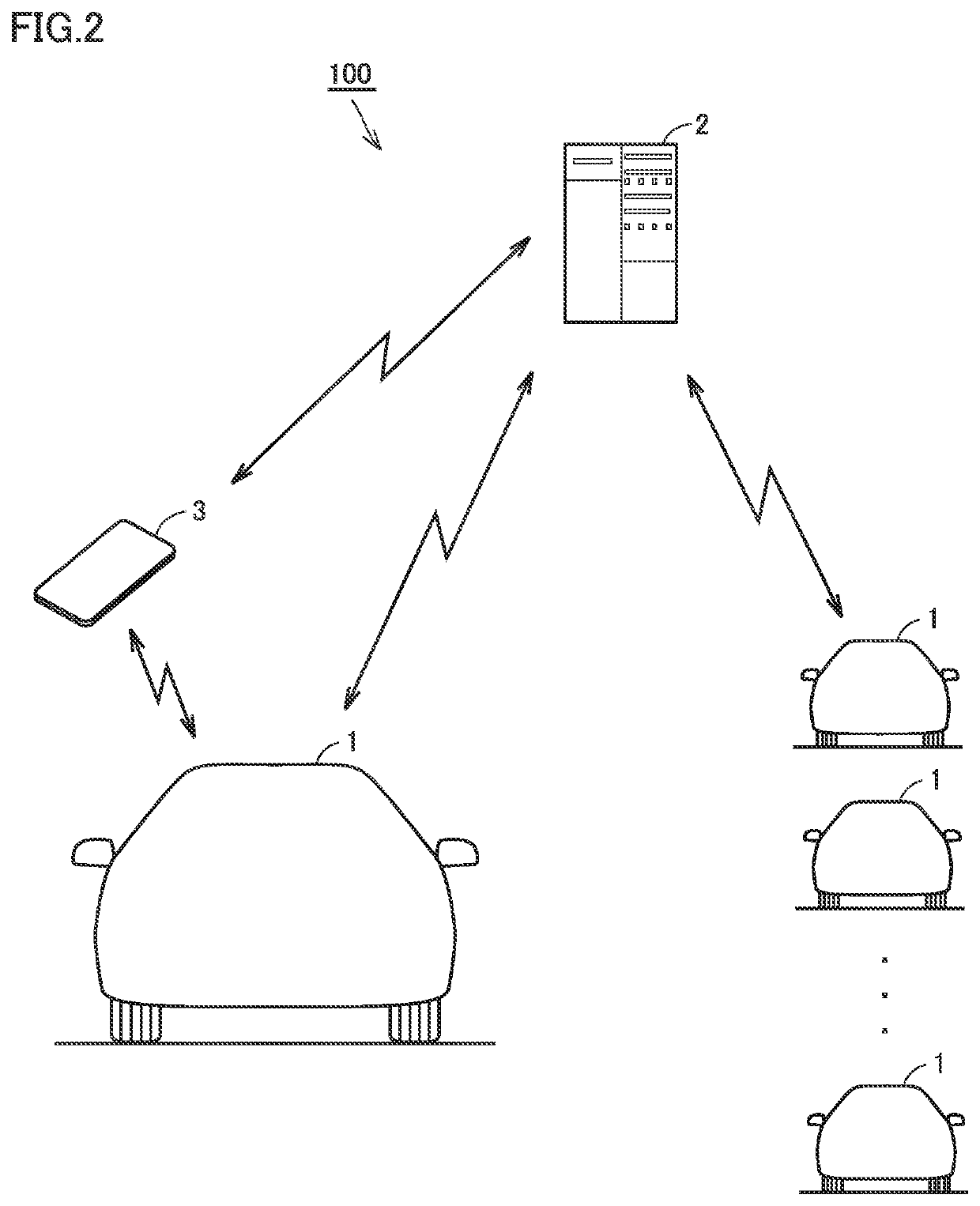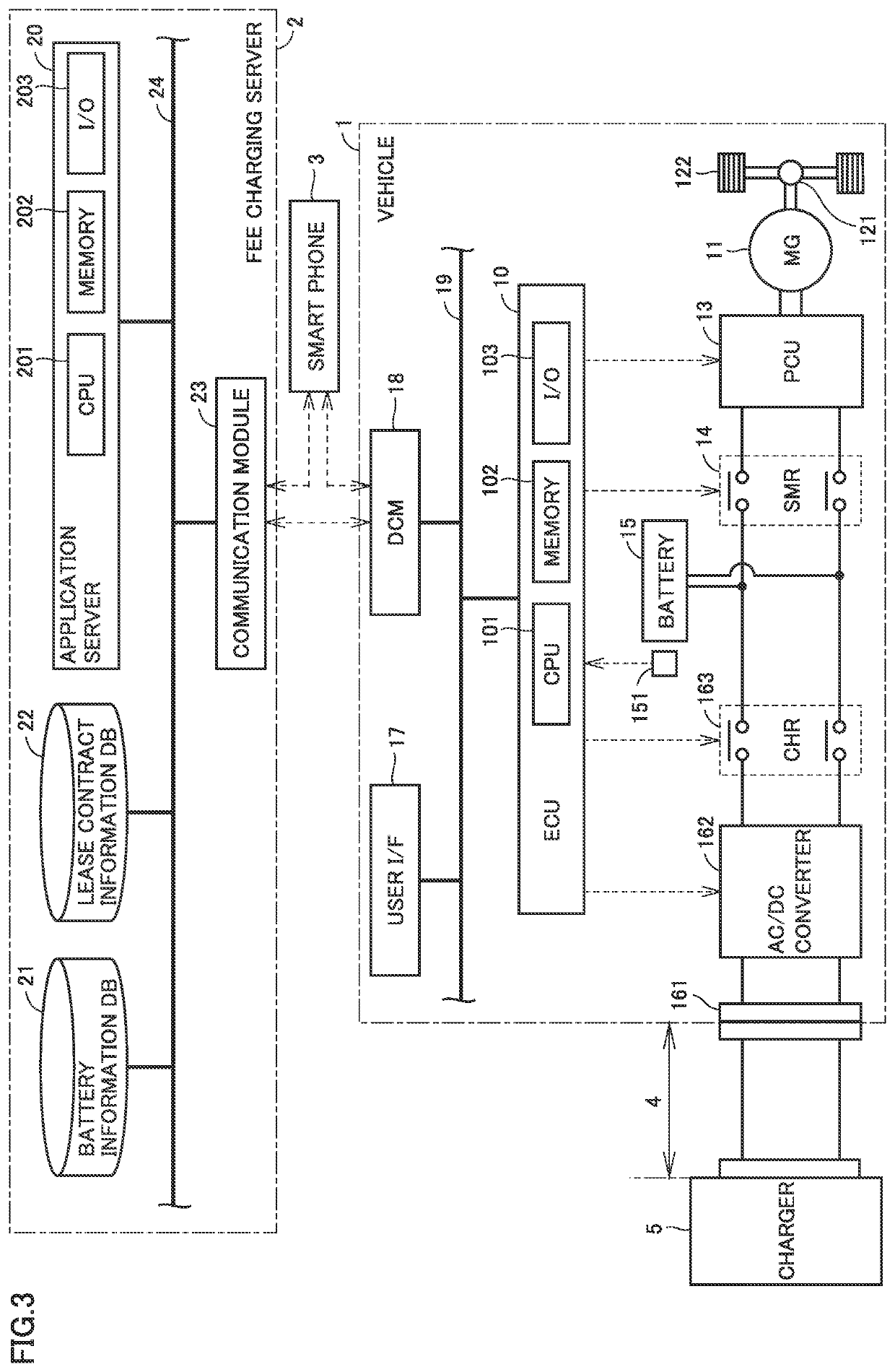Battery lending system, vehicle, server, and battery lending method
a battery and server technology, applied in the field of battery lending system, a vehicle, a server, and a battery lending method, can solve the problems of deterioration of the battery thereon, the degree of progress of deterioration of the battery is not determined, and the deterioration of the battery thereon is more likely to progress, so as to suppress the progress of deterioration of the battery. , the economic value of the battery for a business entity, the effect of significant reduction
- Summary
- Abstract
- Description
- Claims
- Application Information
AI Technical Summary
Benefits of technology
Problems solved by technology
Method used
Image
Examples
first embodiment
[0054]
[0055]FIG. 1 is a view showing a battery distribution model in a first embodiment. Referring to FIG. 1, in the battery distribution model, used batteries 710 to 730 mounted on vehicles 71 to 73, respectively, are collected. Collected batteries 710 to 730 are recycled through a process handled by a collection service provider 81, a test service provider 82, a reconditioning service provider 83, a manufacturer 84, and a dealer 85 (or a recycler 86). In this process, a variety of information about the batteries is managed by a recycling server 9. Then, a battery mounted on a vehicle 7 of a certain user is replaced with a recycled battery.
[0056]More specifically, collection service provider 81 collects used batteries 710 to 730 from vehicles 71 to 73. It should be noted that, although FIG. 1 shows only three vehicles due to space restriction, batteries are actually collected from a larger number of vehicles. Collection service provider 81 disassembles the collected batteries and t...
second embodiment
[0141]FIGS. 8 and 9 describe fee plan B in which lease fee F becomes lower as capacity retention ratio Q of battery 15 decreases. According to fee plan B, a decrease in the EV travel distance of vehicle 1 due to deterioration of battery 15 is reflected in lease fee F, and thus the user can more feel that lending fee F is reasonable. On the other hand, from the viewpoint of preventing excessive deterioration of battery 15, it is also possible to adopt other fee structures. In a second embodiment, fee plans C and D are further introduced in addition to (or instead of) fee plans A and B.
[0142]It should be noted that, since a flowchart showing processing related to lease of the battery in the second embodiment is the same as the flowchart in the first embodiment or the variation thereof (see FIG. 10 or 13), a detailed description thereof will not be repeated.
[0143]FIG. 14 is a view showing the relation between capacity retention ratio Q of battery 15 and lease fee F for battery 15 in fe...
third embodiment
[0150]A third embodiment will describe a configuration of providing information about end of lease of battery 15 or information for increasing an EV distance of vehicle 1, from fee charging server 2 to vehicle 1 (user).
[0151]FIG. 16 is a flowchart showing processing related to lease of the battery in the third embodiment. Referring to FIG. 16, this flowchart is different from the flowchart in the first embodiment (see FIG. 10) in that it further includes information providing processing in S603. Since the processings other than that are the same as the corresponding processings in the first embodiment, the description thereof is not repeated.
[0152]In S505, vehicle 1 calculates capacity retention ratio Q of battery 15, and transmits the result of calculation to fee charging server 2. Fee charging server 2 performs information providing processing, using reception of information about capacity retention ratio Q from vehicle 1 as a trigger in this example. Fee charging server 2 transmi...
PUM
 Login to View More
Login to View More Abstract
Description
Claims
Application Information
 Login to View More
Login to View More - R&D
- Intellectual Property
- Life Sciences
- Materials
- Tech Scout
- Unparalleled Data Quality
- Higher Quality Content
- 60% Fewer Hallucinations
Browse by: Latest US Patents, China's latest patents, Technical Efficacy Thesaurus, Application Domain, Technology Topic, Popular Technical Reports.
© 2025 PatSnap. All rights reserved.Legal|Privacy policy|Modern Slavery Act Transparency Statement|Sitemap|About US| Contact US: help@patsnap.com



